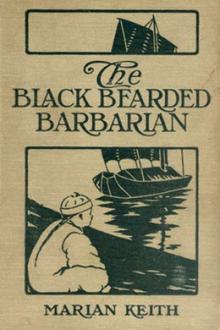Report by the Governor on a Visit to the Micmac Indians at Bay d'Espoir, William MacGregor [books to read fiction .txt] 📗

- Author: William MacGregor
Book online «Report by the Governor on a Visit to the Micmac Indians at Bay d'Espoir, William MacGregor [books to read fiction .txt] 📗». Author William MacGregor
REPORT BY THE GOVERNOR ON A VISIT TO THE MICMAC INDIANS AT BAY D'ESPOIR.
THE GOVERNOR TO THE SECRETARY OF STATE.
Government House,
St. John's,
8th July, 1908.
MY LORD,
I have the honour to inform you that I left St. John's on the 28th May to visit the settlement of the Micmac Indians at Bay d'Espoir, on the south coast of this Island.
Bay d'Espoir is a long inlet of the sea, extending up country over a score of miles. The district is hilly, and is covered by a forest of rather small trees, spruce and birch, but further inland the hills are generally bare. There are comparatively few European residents in this bay.
2. The Micmac settlement is on a reservation situated on the eastern side of the Conne arm of the bay, with a frontage to the water of 230 chains, with an average depth of about 30 chains. It is on the slope of a wooded hill which is generally steep down to the sea, and at most places hard and rocky, covered by spruce forest. Most of the Micmac houses are on an area of about a quarter of a mile, where the ground is least steep and most suitable for building and gardening. In Appendix I. hereto is given a list of the 23 families, consisting of 131 persons, now living on or near the Reservation; and of the 7 persons that have left it for Glenwood in this Colony. Two years ago three families left the Reservation to settle at Lewisport, and have not returned.
3. The Reservation, it appears, was laid off for the Micmacs about 1872, by Mr. Murray, Geological Surveyor of the Colony. It contained 24 blocks of about 30 acres each, with a water frontage of 10 chains. From the copy of the plan of the Reservation enclosed herewith it will be noticed that each parcel was to form the subject of a personal grant to the individual whose name is on the allotment. The right then conferred was in each case a "licence to occupy," of which I enclose a copy in blank form. The licence, it will be observed, would, on the fulfilment of certain conditions, have been replaced by a grant in fee, after five years. In few cases, if in any, have the terms of the licence been complied with, and no grant in fee or other title has been issued to any of the occupants on this Reservation.
[Illustration: PLAN OF INDIAN SETTLEMENT CONNE RIVER BAY D'ESPOIR]
4. These Micmacs are hunters and trappers, and are ignorant alike of agriculture, of seamanship, and of fishing. There are not more than three or four acres of cultivated land in the whole settlement. The greatest cultivator would not grow in one year more than three or four barrels of potatoes and a few heads of cabbage. There are two miserable cows in the place, and some of the least poor Micmacs possess three or four extremely wretched sheep. They have practically no fowls, but I saw one fowl and a tame wild goose. Their houses are small and inferior, of sawn timber, but have windows of glass. A few hundred yards of road, constructed at the expense of the Government, traverses the end of the settlement where most of the people reside.
5. The community is Roman Catholic, and they have a small church, decently well built and kept, on the best site on the Reservation. It is built of sawn timber and would contain nearly one hundred people, which is too small for the festival of St. Anne, the patroness of the congregation. Over the entrance to the church there is printed in large characters, in the Micmac language, a total prohibition against spitting in church.
The cemetery immediately adjoins the church, and there they bury their dead as members of a single family.
They have had a small school open since the 17th January last. It is a wooden room, about 12 feet by 15 feet, by no means new, with a small stove and two little windows.
The teacher is a woman of partly Micmac origin. She receives some very small allowance from the parish priest, and a few of the children, she says, pay some small fees. There are 34 children on the roll, and the winter attendance was from 25 to 30. They are divided into three classes, the highest of which could read slowly, in English, words of three or four letters. About half of them could write a little, a few of them surprisingly well on such brief tuition. The teacher says they are very amenable to discipline. Seldom has a school been started under greater difficulties than this Micmac institution. I was able sincerely to congratulate the teacher on what she has been able to accomplish under such unfavourable circumstances. It is manifest that the children are bright and clever, and that they would become useful and intelligent citizens if they had ordinary educational advantages. In this probably lies the best hope of a future prospect for this community. The settlement is visited now once a month by the parish priest; and in his absence, one of themselves, Stephen Jeddore, reads the service on Sunday. Last year they were visited by the Right Reverend Bishop McNeil.
6. They appear to be a comparatively healthy people. So far as known, no one is at present affected by tuberculosis in any form. I saw one woman of ninety years of age, Sarah Aseleka, perhaps the only Micmac of pure blood in the settlement. She was born at Bay St. George, and came to Bay d'Espoir some three score of years ago when the Micmacs first settled in this bay. The next oldest person is John Bernard, who is about eighty. Few of them were even fairly well clothed; the majority were in rags. A few wore home-made deer-skin boots, but most of them had purchased ready-made boots or shoes. They make deer-skin boots by scraping caribou skin, and tanning it in a decoction of spruce bark. Such boots are, they state, worn through in a few days. The women can spin wool, and knit stockings. Their food consists chiefly of flour, a few potatoes, some cabbage, and perhaps about half a score of caribou a year for each family, hung up on trees and thus frozen during the winter. They also smoke fish, principally freshwater fish, and obtain a few grouse and hares, but this small game has almost disappeared from the district. They have to go inland a score of miles to obtain caribou for food.
The men are of good size, and strongly built, but clearly of mixed descent, many being nearly like Europeans. The children have all, without exception, very dark, soft eyes, straight black hair, and the nose much more prominent than in the Esquimaux of Labrador.
7. The principal Chief is Olibia, but I unfortunately did not meet him. He had gone out in March to his trapping ground near Mount Sylvester, but could not then reach his traps on account of the unusually great quantity of snow, and he had returned thither at the time of my visit.
I was informed that he was selected as Chief by the Micmacs of the Reservation, and was appointed by the principal Micmac Chief at St. Anne's, Nova Scotia, and by the priest. I was shown the insignia of office worn on ceremonial occasions by the Chief. It consists of a gold medallion with a chain attached, the whole in a case covered by red velvet. The medallion is inscribed "Presented to the Chief of the Micmacs Indians of Newfoundland," but with neither name nor date. The community paid for this badge of office forty-eight dollars.
The second chief is Geodol-called in English Noel Jeddore-who represented Olibia in his absence. Geodol is the owner of one of the two cows on the Reservation, and his brother possesses the second one. The Chieftainship is not hereditary, but is conferred, when a vacancy occurs, on the man the people prefer. They are easy to govern and seldom quarrel. They have no intoxicating liquor and seldom obtain any. They pay 60 to 70 cents a pound for their tobacco, 20 to 30 cents for gunpowder, and 10 cents for shot. They sell their fur locally where they make their small family purchases.
8. The head of each family has his own special trapping ground in the interior, over which others may travel, fish, or shoot, but not trap. For example Geodol, the second chief, traps about Gulp Lake; Olibia, the chief, about Mount Sylvester; Nicholas Jeddore about Burnt Hill; George Jeddore at Bare Hill and Middle Ridge; Stephen Jeddore at Scaffold Hill; Noel Matthews at Great Burnt Lake; &c.
None go as far north as the railway, but Meiklejohn goes as far as John's Pond. Europeans are encroaching on their trapping lands, but do not go far inland. This pushes the Micmacs further inland to get away from the Europeans. They claim no fishing rights at sea, and say frankly they are only trappers and guides.
They go inland in September, when their first care is to shoot a deer and smoke the flesh as food. They return home from the 20th to the 25th November to prepare their traps for fox, lynx, otter, and bear. In December they shoot, as winter food for the family, does and young stags, but not old stags. They say the arctic hare is now very rare on their trapping lands; and snipe, geese, and ducks are far fewer than they were a few years ago. They appear to be very careful not to waste venison, never killing any deer they do not actually require and use as food.
9. It is not possible to regard the present condition and the prospects of this settlement of Micmacs as being bright. Game, their principal food, is manifestly becoming more difficult to procure; their trapping lands are being encroached upon by Europeans; they are not seamen; they are not fishermen; and they do not understand agriculture. In the middle of their Reservation a saw-mill has been in operation some years, apparently on the allotment of Bernard John, but without his sanction or permission, and, it seems, in spite of the protests of the community. None of the Micmacs work at this mill. Formerly they cut logs for it, but the trees that grew near the water have, they say, all been used up and there are none left within their reach that they could bring to the water. The saw-mill is thus an eyesore to them, as it is on what they regard as their land, and in defiance of them.
Although they have not complied with the conditions set forth on the form of licence, which would have entitled them to a grant in fee, yet their occupation has extended over so many years that there is no probability whatever that the Government of Newfoundland would withhold from them grants, as a matter of grace, if they only applied for them and could show how they could use the land. It would not be difficult to find a location for the community that would be more suitable for them so far as cultivation is concerned, and be equally good for hunting and trapping. With some aid, such as supplies of seed potatoes and a few animals, they could no doubt derive much greater resources than at present from agriculture, especially if to that were added a good





Comments (0)